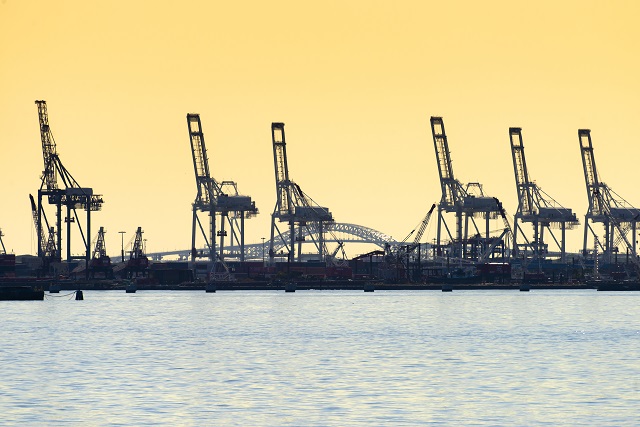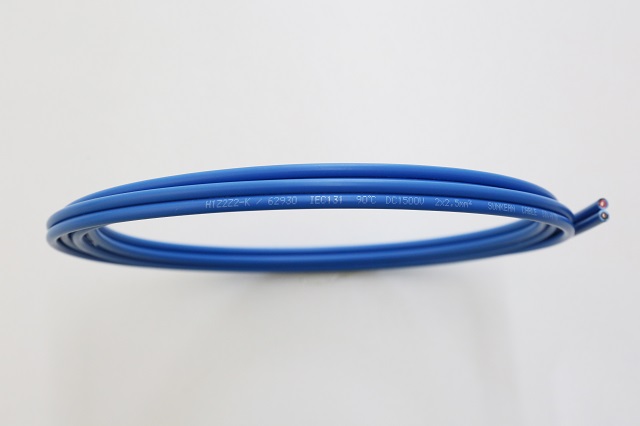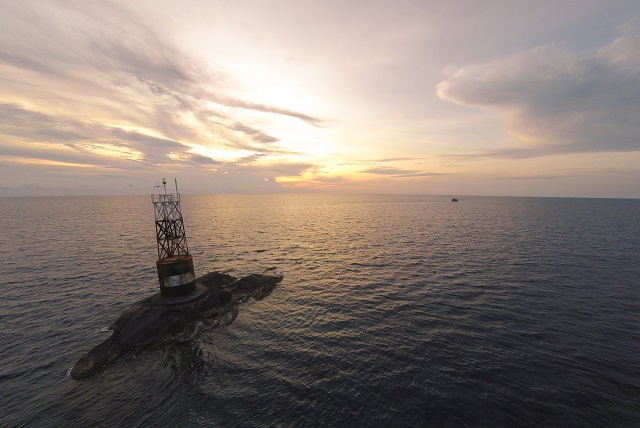I. Introduction

A. Introduction to solar cables and their significance in solar energy systems
Solar energy has emerged as a pivotal solution in the quest for sustainable and renewable energy sources. At the heart of any solar energy system lies a network of crucial components, and among them, solar cables play a vital role. These cables serve as the circulatory system of solar installations, carrying the generated electricity from the photovoltaic (PV) panels to the rest of the system and eventually to the grid or storage units.
Solar cables are specifically designed to withstand the unique demands of solar energy systems. Unlike traditional electrical cables, solar cables must endure exposure to harsh outdoor conditions, including temperature fluctuations, UV radiation, and moisture. Moreover, they must maintain electrical conductivity efficiently to ensure the optimal performance of the entire solar array.
B. Focus on waterproof solar cables and their role in ensuring safety and efficiency
Waterproof solar cables, as the name suggests, are designed to withstand exposure to moisture, making them ideal for outdoor solar installations where they are exposed to rain, snow, and humidity. Their primary role is to safeguard against water ingress, which can lead to electrical shorts, corrosion, and ultimately system failures.
Ensuring the safety of solar installations is crucial not only for protecting the equipment but also for safeguarding the property and the individuals interacting with the system. Water intrusion can compromise the insulation of standard cables, leading to potential electric shock hazards or even fire risks. By employing waterproof solar cables, installers can mitigate these risks and enhance the overall safety of the solar energy system.
Moreover, the efficiency of a solar energy system heavily relies on the integrity of its components. Any disruption or degradation in the cables can result in energy loss, reducing the overall performance of the system. Waterproof solar cables, with their durable construction and robust insulation, help maintain optimal electrical conductivity, thus maximizing the energy yield of the solar panels.
II. Waterproof Solar Cables: What are They?

A. Definition and purpose of waterproof solar cables
Waterproof solar cables are specially designed cables engineered to resist the ingress of moisture, thereby protecting the integrity and functionality of the solar energy system. Unlike conventional cables, which may be susceptible to damage and degradation in wet conditions, waterproof solar cables feature robust insulation and protective layers that ensure their resilience against water intrusion.
The primary purpose of waterproof solar cables is to safeguard the electrical connections within the solar energy system from moisture-related damage. In outdoor solar installations, these cables are exposed to various environmental factors, including rain, snow, humidity, and even submersion in water. Without adequate protection, standard cables may degrade over time, leading to electrical shorts, corrosion, and potential safety hazards.
Waterproof solar cables mitigate these risks by providing a barrier against water ingress, thereby preserving the electrical integrity of the system. By maintaining reliable electrical conductivity, these cables ensure the efficient transmission of electricity generated by the solar panels to the rest of the system, including inverters, batteries, and the grid. Additionally, their waterproof properties enhance the safety of the installation by reducing the likelihood of electrical faults and potential hazards such as electric shock or fire.
B. Why waterproofing is crucial in solar installations
Protection Against Moisture-Related Damage: Solar installations are typically located outdoors, where they are constantly exposed to moisture from rain, snow, dew, and humidity. Without adequate protection, moisture can infiltrate standard cables, compromising their insulation and causing corrosion, electrical shorts, and ultimately system failures. Waterproof solar cables, with their specialized design and construction, provide a barrier against water ingress, preserving the integrity of the electrical connections and ensuring the reliable operation of the system under diverse weather conditions.
Enhanced Safety: Water and electricity are a dangerous combination. In solar installations, where high voltages are involved, the risk of electrical hazards is heightened in the presence of moisture. Waterproof solar cables mitigate this risk by preventing water from coming into contact with the conductive elements, thereby reducing the likelihood of electrical faults, electric shock, and fire hazards. By prioritizing waterproofing in solar installations, installers can enhance the safety of the system and protect both property and personnel from potential harm.
Longevity of the System: Solar energy systems are significant investments designed to provide clean and renewable energy for decades. However, exposure to moisture can accelerate the degradation of unprotected cables, leading to premature failure and costly repairs or replacements. Waterproof solar cables, on the other hand, are engineered to withstand the rigors of outdoor environments, ensuring the longevity and durability of the entire solar installation. By investing in waterproofing, system owners can safeguard their investments and enjoy reliable performance for years to come.
C. Characteristics of high-quality waterproof solar cables
Robust Construction: High-quality waterproof solar cables are built to withstand the harshest environmental conditions. They feature a durable outer sheath made from materials such as cross-linked polyethylene (XLPE) or ethylene propylene rubber (EPR), which provide excellent resistance to abrasion, UV radiation, and chemical exposure. Additionally, these cables are often reinforced with multiple layers of insulation to ensure reliable performance over the long term.
Superior Waterproofing: The hallmark of high-quality waterproof solar cables is their impeccable waterproofing capabilities. They employ advanced sealing techniques, such as double extrusion or injection molding, to create a watertight barrier that prevents moisture ingress even in the most challenging conditions. Additionally, these cables undergo rigorous testing to verify their waterproofing performance, ensuring peace of mind for installers and system owners alike.
Excellent Electrical Properties: In addition to their waterproofing properties, high-quality waterproof solar cables maintain excellent electrical conductivity. They are designed to minimize power losses and voltage drops, thereby maximizing the energy yield of the solar panels and optimizing the overall performance of the system. Moreover, these cables exhibit low impedance and resistance to ensure efficient power transmission without compromising safety.
Flexibility and Maneuverability: Ease of installation is another hallmark of high-quality waterproof solar cables. These cables are engineered to be flexible and easy to maneuver, allowing for seamless routing and connection within the solar energy system. Their pliable construction enables installers to navigate obstacles and achieve precise cable runs without sacrificing performance or durability.
Compliance with Industry Standards: High-quality waterproof solar cables adhere to stringent industry standards and certifications to guarantee their performance and safety. They are tested and certified by recognized organ
III. Components of Waterproof Solar Cables

A. Insulation materials used in waterproof solar cables
Cross-Linked Polyethylene (XLPE): XLPE is one of the most widely used insulation materials in waterproof solar cables. It offers excellent thermal and electrical properties, making it ideal for outdoor applications. XLPE insulation is known for its high resistance to heat, moisture, and UV radiation, providing reliable protection against environmental stressors. Additionally, XLPE cables are lightweight and flexible, facilitating easy installation and maneuverability in solar energy systems.
Ethylene Propylene Rubber (EPR): EPR is another popular choice for insulation in waterproof solar cables. It boasts superior resistance to weathering, ozone, and chemicals, making it suitable for outdoor environments. EPR insulation maintains its flexibility and performance over a wide range of temperatures, ensuring reliable operation even in extreme conditions. Additionally, EPR cables exhibit excellent electrical properties, minimizing power losses and maximizing the efficiency of solar installations.
Thermoplastic Elastomers (TPE): TPE is a versatile insulation material that combines the flexibility of rubber with the processability of thermoplastics. TPE insulation offers good resistance to weathering, abrasion, and UV radiation, making it suitable for outdoor use in solar installations. TPE cables are known for their durability and ease of installation, allowing for seamless routing and connection within the system. Moreover, TPE insulation maintains its performance over time, ensuring long-term reliability in solar energy applications.
Polyvinyl Chloride (PVC): PVC insulation is commonly used in waterproof solar cables due to its affordability and versatility. While not as resistant to environmental factors as XLPE or EPR, PVC insulation provides adequate protection against moisture and abrasion in less demanding applications. PVC cables are lightweight and easy to handle, making them suitable for residential and light commercial solar installations. However, it's important to note that PVC cables may degrade over time when exposed to prolonged sunlight and extreme temperatures, necessitating careful consideration of the installation environment.
Fluoropolymer (e.g., ETFE, FEP): Fluoropolymer insulation offers exceptional thermal and chemical resistance, making it well-suited for harsh outdoor environments. ETFE (ethylene tetrafluoroethylene) and FEP (fluorinated ethylene propylene) are two commonly used fluoropolymer materials in waterproof solar cables. Fluoropolymer cables exhibit superior performance in extreme temperatures and chemical exposure, ensuring long-lasting reliability in solar energy systems. Additionally, fluoropolymer insulation provides excellent electrical properties, minimizing power losses and optimizing the efficiency of solar installations.
B. Protective layers and their role in enhancing durability
Outer Sheath: The outer sheath is the first line of defense for waterproof solar cables, providing a robust barrier against physical damage, moisture, UV radiation, and chemical exposure. Typically made from materials such as cross-linked polyethylene (XLPE), ethylene propylene rubber (EPR), or thermoplastic elastomers (TPE), the outer sheath reinforces the cable's resistance to abrasion, puncture, and environmental stressors. Additionally, the outer sheath enhances the cable's flexibility and weatherability, allowing for easy installation and long-term performance in outdoor applications.
Reinforcement Layers: Some waterproof solar cables feature reinforcement layers, which further enhance their durability and mechanical strength. These layers, often composed of high-tensile materials such as aramid fibers or fiberglass, provide added protection against stretching, tearing, and impact damage. Reinforcement layers also help maintain the cable's dimensional stability and resistance to deformation under mechanical stress, ensuring reliable performance in demanding installation environments.
Armor or Braiding: In certain applications where additional protection is required, waterproof solar cables may incorporate armor or braiding layers. Armor consists of a metallic or non-metallic shield that surrounds the cable, offering superior resistance to physical damage and rodent intrusion. Braiding, on the other hand, involves intertwining strands of wire or textile around the cable core to provide reinforcement and shielding. These armor or braiding layers enhance the cable's resistance to abrasion, compression, and external forces, making it suitable for rugged outdoor installations and underground conduit systems.
Moisture Barrier: Waterproof solar cables are equipped with moisture barriers to prevent water ingress and ensure the integrity of the insulation system. These barriers, often consisting of specialized tapes, films, or coatings, seal the cable's core and connections, preventing moisture from penetrating the insulation layers. By effectively sealing out water and moisture, the moisture barrier maintains the electrical properties of the cable and protects against corrosion, electrical faults, and premature failure, thereby enhancing the overall reliability of the solar energy system.
Flame Retardant Coating (Optional): In applications where fire safety is a concern, waterproof solar cables may feature flame retardant coatings or additives. These coatings inhibit the spread of flames and reduce the release of toxic gases in the event of a fire, minimizing the risk of property damage and personal injury. Flame retardant coatings also enhance the cable's resistance to high temperatures and provide an additional layer of protection in hazardous environments.
IV. Conclusion
If you are interested in high-quality cables like AD7, AD8 cables and comprehensive after-sales service, welcome to visit SUNKEAN, where there are all kinds of latest cable products you need. If you have any needs, you can leave a message to our salesman, thank you for your coordination. Email: sales@sunkean.com